5.14 Altering Consciousness With Psychoactive Drugs
Learning Objectives
- Summarize the major psychoactive drugs and their influences on consciousness and behaviour.
- Review the evidence regarding the dangers of recreational drugs.
A psychoactive drug is a chemical that changes our states of consciousness, particularly our perceptions and moods. It is a chemical that changes our states of consciousness, particularly our perceptions and moods. These drugs are commonly found in everyday foods and beverages, including chocolate, coffee, and soft drinks, as well as in alcohol and in over-the-counter drugs, such as aspirin, Tylenol, and cold and cough medication. Psychoactive drugs are also frequently prescribed as sleeping pills, tranquillizers, and anti-anxiety medications, and they may be taken, illegally, for recreational purposes. As you can see in the following tables of Psychoactive Drugs by Class, the four primary classes of psychoactive drugs are stimulants Table 5.14.1, depressants Table 5.14.2, opioids Table 5.14.3, and hallucinogens Table 5.14.4.
Psychoactive drugs affect consciousness by influencing how neurotransmitters operate at the synapses of the central nervous system (CNS). Some psychoactive drugs are agonists, which mimic the operation of a neurotransmitter; some are antagonists, which block the action of a neurotransmitter; and some work by blocking the re-uptake of neurotransmitters at the synapse.
Table 5.14.1 Psychoactive Drugs by Class: Stimulants
Stimulants block the re-uptake of dopamine, norepinephrine, and serotonin in the synapses of the CNS. Symptoms: Enhanced mood and increased energy
| Drug | Dangers and side effects | Psychological dependence | Physical dependence | Addiction potential |
|---|---|---|---|---|
| Caffeine | May create dependence | Low | Low | Low |
| Nicotine | Has major negative health effects if smoked or chewed | High | High | High |
| Cocaine | Decreased appetite, headache | Low | Low | Moderate |
| Amphetamines | Possible dependence, accompanied by severe “crash” with depression as drug effects wear off, particularly if smoked or injected | Moderate | Low | Moderate to high |
Table 5.14.2 Psychoactive Drugs by Class: Depressants
Depressants change consciousness by increasing the production of the neurotransmitter GABA and decreasing the production of the neurotransmitter acetylcholine, usually at the level of the thalamus and the reticular formation.
Symptoms: Calming effects, sleep, pain relief, slowed heart rate and respiration
| Drug | Dangers and side effects | Psychological dependence | Physical dependence | Addiction potential |
|---|---|---|---|---|
| Alcohol | Impaired judgment, loss of coordination, dizziness, nausea, and eventually a loss of consciousness | Moderate | Moderate | Moderate |
| Barbiturates and benzodiazepines | Sluggishness, slowed speech, drowsiness, in severe cases, coma or death | Moderate | Moderate | Moderate |
| Toxic inhalants | Brain damage and death | High | High | High |
Table 5.14.3 Psychoactive Drugs by Class: Opioids
The chemical makeup of opioids is similar to the endorphins, the neurotransmitters that serve as the body’s “natural pain reducers.”
Symptoms: Slowing of many body functions, constipation, respiratory and cardiac depression, and the rapid development of tolerance
| Drug | Dangers and side effects | Psychological dependence | Physical dependence | Addiction potential |
|---|---|---|---|---|
| Opium | Side effects include nausea, vomiting, tolerance, and addiction. | Moderate | Moderate | Moderate |
| Morphine | Restlessness, irritability, headache and body aches, tremors, nausea, vomiting, and severe abdominal pain | High | Moderate | Moderate |
| Heroin | All side effects of morphine but about twice as addictive as morphine | High | Moderate | High |
Table 5.14.4 Psychoactive Drugs by Class: Hallucinogens
The chemical compositions of the hallucinogens are similar to the neurotransmitters serotonin and epinephrine, and they act primarily by mimicking them. Symptoms: Altered consciousness; hallucinations
| Drug | Dangers and side effects | Psychological dependence | Physical dependence | Addiction potential |
|---|---|---|---|---|
| Marijuana | Mild intoxication; enhanced perception | Low | Low | Low |
| LSD, mescaline, PCP, and peyote | Hallucinations; enhanced perception | Low | Low | Low |
In some cases, the effects of psychoactive drugs mimic other naturally occurring states of consciousness. For instance, sleeping pills are prescribed to create drowsiness, and benzodiazepines are prescribed to create a state of relaxation. In other cases, psychoactive drugs are taken for recreational purposes with the goal of creating states of consciousness that are pleasurable or that help us escape our normal consciousness.
The use of psychoactive drugs, and especially those that are used illegally, has the potential to create very negative side effects, as you see in the “Psychoactive Drugs by Class” Tables. This does not mean that all drugs are dangerous, but rather that all drugs can be dangerous, particularly if they are used regularly over long periods of time. Psychoactive drugs create negative effects not so much through their initial use but through their continued use, accompanied by increasing doses, that ultimately may lead to drug abuse.
The problem is that many drugs create tolerance: an increase in the dose required to produce the same effect, which makes it necessary for the user to increase the dosage or the number of times per day that the drug is taken. As the use of the drug increases, the user may develop a dependence, defined as a need to use a drug or other substance regularly. Dependence can be psychological, in which case the drug is desired and has become part of the everyday life of the user, but no serious physical effects result if the drug is not obtained; or physical, in which case serious physical and mental effects appear when the drug is withdrawn. Cigarette smokers who try to quit, for example, experience physical withdrawal symptoms, such as becoming tired and irritable, as well as extreme psychological cravings to enjoy a cigarette in particular situations, such as after a meal or when they are with friends.
Users may wish to stop using the drug, but when they reduce their dosage they experience withdrawal — negative experiences that accompany reducing or stopping drug use, including physical pain and other symptoms. When the user powerfully craves the drug and is driven to seek it out, over and over again, no matter what the physical, social, financial, and legal cost, we say that he or she has developed an addiction to the drug.
This does not mean that using recreational drugs is not dangerous. For people who do become addicted to drugs, the success rate of recovery is low. These drugs are generally illegal and carry with them potential criminal consequences if one is caught and arrested. Drugs that are smoked may produce throat and lung cancers and other problems. Snorting (“sniffing”) drugs can lead to a loss of the sense of smell, nosebleeds, difficulty in swallowing, hoarseness, and chronic runny nose. Injecting drugs intravenously carries with it the risk of contracting infections such as hepatitis and HIV. Furthermore, the quality and contents of illegal drugs are generally unknown, and the doses can vary substantially from purchase to purchase. The drugs may also contain toxic chemicals.
Another challenge is the unintended consequences of combining drugs, which can produce serious side effects. Combining drugs is dangerous because their combined effects on the CNS can increase dramatically and can lead to accidental or even deliberate overdoses. For instance, ingesting alcohol or benzodiazepines along with the usual dose of heroin is a frequent cause of overdose deaths in opiate addicts, and combining alcohol and cocaine can have a dangerous impact on the cardiovascular system. Although all recreational drugs are dangerous, some can be more deadly than others. One way to determine how dangerous recreational drugs are is to calculate a safety ratio, based on the dose that is likely to be fatally divided by the normal dose needed to feel the effects of the drug. Drugs with lower ratios are more dangerous because the difference between the normal and the lethal dose is small. For instance, heroin has a safety ratio of 6 because the average fatal dose is only six times greater than the average effective dose. On the other hand, marijuana has a safety ratio of 1,000. This is not to say that smoking marijuana cannot be deadly, but it is much less likely to be deadly than heroin. The safety ratios of common recreational drugs are shown in Table 5.14.5, “Popular Recreational Drugs and Their Safety Ratios.”
5.14.5 Popular Recreational Drugs and Their Safety Ratios
The safety ratios of common recreational drugs are shown. Drugs with lower safety ratios have a greater risk of brain damage and death.
Drugs with lower safety ratios have a greater risk of brain damage and death.
Adapted from Gable (2004).
| Drug | Description | Street or brand names | Safety ratio |
|---|---|---|---|
| Heroin | Strong depressant | Smack, junk, H | 6 |
| GHB (Gamma hydroxybutyrate) | \’93Rave\’94 drug (not Ecstacy), also used as a \’93date rape\’94 drug. | Georgia home boy, liquid ecstasy, liquid X, liquid G, fantasy | 8 |
| Isobutyl nitrite | Depressant and toxic inhalant | Poppers, rush, locker room | 8 |
| Alcohol | The active compound is ethanol | 10 | |
| DXM (Dextromethorphan) | The active ingredient in over-the-counter cold and cough medicines | 10 | |
| Methamphetamine | May be injected or smoked | Meth, crank | 10 |
| Cocaine | May be inhaled or smoked | Crack, coke, rock, blue | 15 |
| MDMA (methylene\’addioxymetham\’adphetamine) | Very powerful stimulant | Ecstasy | 16 |
| Codeine | Depressant | 20 | |
| Methadone | Opioid | 20 | |
| Mescaline | Hallucinogen | 24 | |
| Benzodiazepine | Prescription tranquillizer | Centrax, Dalmane, Doral, Halcion, Librium, ProSom, Restoril, Xanax, Valium | 30 |
| Ketamine | Prescription anesthetic | Ketanest, Ketaset, Ketalar | 40 |
| DMT (Dimethyl\’adtryptamine) | Hallucinogen | 50 | |
| Phenobarbital | Usually prescribed as a sleeping pill | Luminal (Phenobarbital), Mebaraland, Nembutal, Seconal, Sombulex | 50 |
| Prozac | Antidepressant | 100 | |
| Nitrous oxide | Often inhaled from whipped cream dispensers | Laughing gas | 150 |
| Lysergic acid diethylamide (LSD) | Acid | 1,000 | |
| Marijuana (Cannabis) | The active ingredient is THC | Pot, spliff, weed | 1,000 |
Stimulants
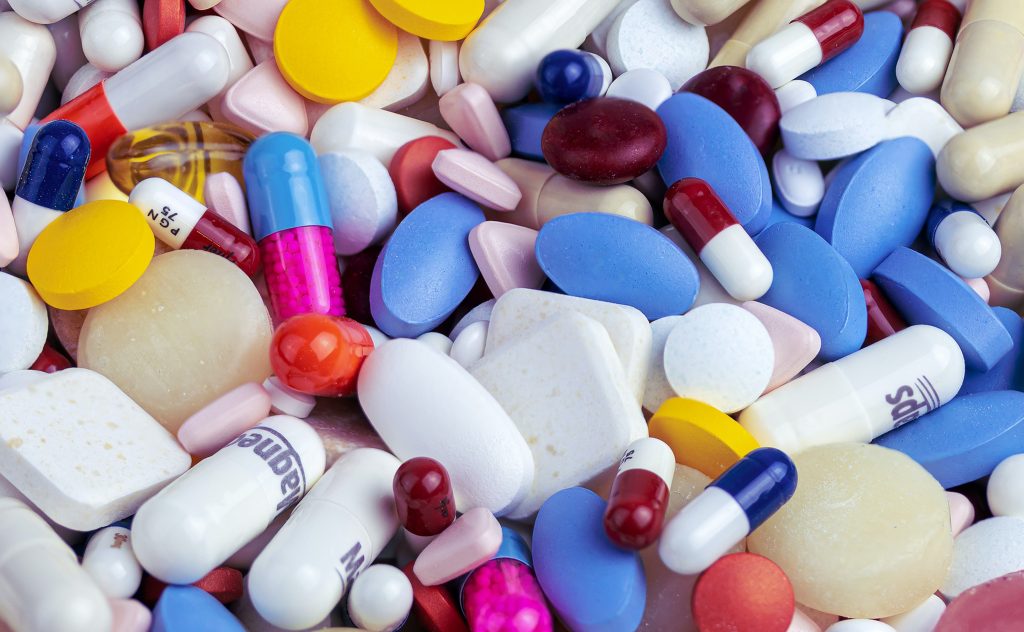
Stimulant is a class of psychoactive drugs that operate by blocking the re-uptake of dopamine, norepinephrine, and serotonin in the synapses of the central nervous system. A stimulant is a psychoactive drug that operates by blocking the re-uptake of dopamine, norepinephrine, and serotonin in the synapses of the CNS. Because more of these neurotransmitters remain active in the brain, the result is an increase in the activity of the sympathetic division of the autonomic nervous system (ANS). Effects of stimulants include increased heart and breathing rates, pupil dilation, and increases in blood sugar accompanied by decreases in appetite. For these reasons, stimulants are frequently used to help people stay awake and to control weight.
Used in moderation, some stimulants may increase alertness, but used in an irresponsible fashion they can quickly create dependency. A major problem is the “crash” that results when the drug loses its effectiveness and the activity of the neurotransmitters returns to normal. The withdrawal from stimulants can create profound depression and lead to an intense desire to repeat the high.
Caffeine
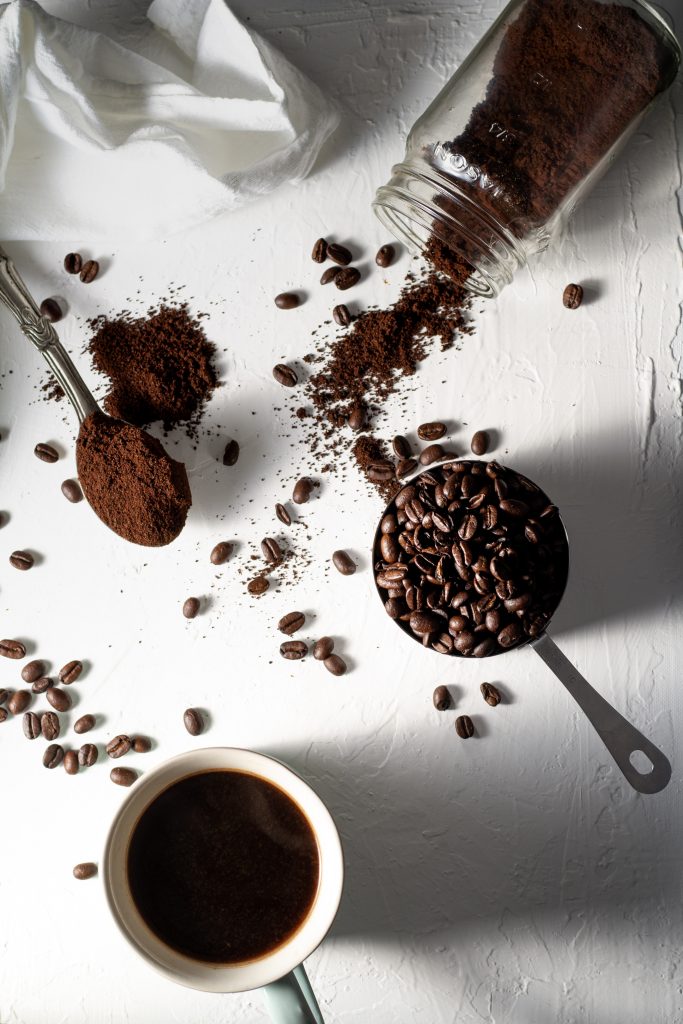
Caffeine is a bitter psychoactive drug found in the beans, leaves, and fruits of plants, where it acts as a natural pesticide. It is found in a wide variety of products, including coffee, tea, soft drinks, candy, and desserts. In North America, more than 80% of adults consume caffeine daily (Lovett, 2005). Caffeine acts as a mood enhancer and provides energy. Although Health Canada lists caffeine as a safe food substance, it has at least some characteristics of dependence. People who reduce their caffeine intake often report being irritable, restless, and drowsy, as well as experiencing strong headaches, and these withdrawal symptoms may last up to a week. Most experts feel that using small amounts of caffeine during pregnancy is safe, but larger amounts of caffeine can be harmful to the fetus (Health Canada)(1).
Nicotine

Nicotine is a psychoactive drug found in tobacco and other members of the nightshade family of plants, where it acts as a natural pesticide. Nicotine is the main cause for the dependence-forming properties of tobacco use, and tobacco use is a major health threat. Nicotine creates both psychological and physical addiction, and it is one of the hardest addictions to break. Nicotine content in cigarettes has slowly increased over the years, making quitting smoking more and more difficult. Nicotine is also found in smokeless (chewing) tobacco.
People who want to quit smoking sometimes use other drugs to help them. For instance, the prescription drug Chantix acts as an antagonist, binding to nicotine receptors in the synapse, which prevents users from receiving the normal stimulant effect when they smoke. At the same time, the drug also releases dopamine, the reward neurotransmitter. In this way, Chantix dampens nicotine withdrawal symptoms and cravings. In many cases people are able to get past the physical dependence, allowing them to quit smoking at least temporarily. In the long run, however, the psychological enjoyment of smoking may lead to relapse.
Cocaine.
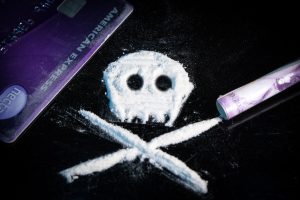
Cocaine is an addictive drug obtained from the leaves of the coca plant. In the late 19th and early 20th centuries, it was a primary constituent in many popular tonics and elixirs and, although it was removed in 1905, was one of the original ingredients in Coca-Cola. Today cocaine is taken illegally as a recreational drug.
Cocaine has a variety of adverse effects on the body. It constricts blood vessels, dilates pupils, and increases body temperature, heart rate, and blood pressure. It can cause headaches, abdominal pain, and nausea. Since cocaine also tends to decrease appetite, chronic users may also become malnourished. The intensity and duration of cocaine’s effects include increased energy and reduced fatigue, depending on how the drug is taken. The faster the drug is absorbed into the bloodstream and delivered to the brain, the more intense the high. Injecting or smoking cocaine produces a faster, stronger high than snorting it. However, the faster the drug is absorbed, the faster the effects subside. The high from snorting cocaine may last 30 minutes, whereas the high from smoking “crack” cocaine may last only 10 minutes. In order to sustain the high, the user must administer the drug again, which may lead to frequent use, often in higher doses, over a short period of time. Cocaine has a safety ratio of 15, making it a very dangerous recreational drug.
Amphetamine
Amphetamine is a stimulant that produces increased wakefulness and focus, along with decreased fatigue and appetite. Types of amphetamines: amphetamine, methamphetamine, dextroamphetamine. Amphetamines are used in prescription medications to treat attention deficit disorder (ADD), narcolepsy, and to control appetite. Some brand names of amphetamines are Adderall, Benzedrine, Dexedrine, and Vyvanse. But amphetamine (“speed”) is also used illegally as a recreational drug. The methylated version of amphetamine, methamphetamine (“meth” or “crank”), is currently favoured by users, partly because it is available in ampoules ready for use by injection. Meth is a highly dangerous drug with a safety ratio of only 10. In the 1970s, new laws restricted the medical use of these drugs. Today, only dextroamphetamine, lisdexamfetamine, methylphenidate and mixed salts amphetamine are made for medical use. These drugs are used to treat attention-deficit/hyperactivity disorder (ADHD) in children and adults. All other amphetamines are made in illegal laboratories.

The different types of amphetamines—and related drugs such as methylphenidate (e.g., Ritalin)—are stimulant drugs. Stimulants speed up the central nervous system. They act like adrenaline, a hormone that is one of the body’s natural stimulants. Other drugs with similar effects include cocaine, ecstasy, caffeine, and many others. Amphetamines may produce a very high level of tolerance, leading users to increase their intake, often in “jolts” taken every half hour or so. Although the level of physical dependency is small, amphetamines may produce very strong psychological dependence, effectively amounting to addiction. Continued use of stimulants may result in severe psychological depression. The effects of the stimulant methylenedioxymethamphetamine (MDMA), also known as “Ecstasy,” provide a good example. MDMA is a very strong stimulant that very successfully prevents the reuptake of serotonin, dopamine, and norepinephrine. It is so effective that when used repeatedly it can seriously deplete the number of neurotransmitters available in the brain, producing a catastrophic mental and physical “crash” resulting in serious, long-lasting depression. MDMA also affects the temperature-regulating mechanisms of the brain, so in high doses, and especially when combined with vigorous physical activity like dancing, it can cause the body to become so drastically overheated that users can literally “burn up” and die from hyperthermia and dehydration.
Depressants
Slowing Down the Brain With Depressants: Alcohol, Barbiturates and Benzodiazepines, and Toxic Inhalants
In contrast to stimulants, which work to increase neural activity, a depressant acts to slow down consciousness. A depressant is a class of psychoactive drugs that reduce the activity of the CNS. is a psychoactive drug that reduces the activity of the CNS. Depressants are widely used as prescription medicines to relieve pain, to lower heart rate and respiration, and as anticonvulsants. Depressants change consciousness by increasing the production of the neurotransmitter GABA and decreasing the production of the neurotransmitter acetylcholine, usually at the level of the thalamus and the reticular formation. The outcome of depressant use (similar to the effects of sleep) is a reduction in the transmission of impulses from the lower brain to the cortex
Alcohol
The most commonly used depressant is alcohol which is a colourless liquid, produced by the fermentation of sugar or starch, which is the intoxicating agent in fermented drinks. a colourless liquid, produced by the fermentation of sugar or starch, that is the intoxicating agent in fermented drinks. Alcohol is the oldest and most widely used drug of abuse in the world. Alcohol is a depressant drug that is legal in Canada. Depressant drugs slow down the parts of your brain that affect your thinking, behaviour, breathing and heart rate. For this reason, it should be consumed moderately. In low to moderate doses, alcohol first acts to remove social inhibitions by slowing activity in the sympathetic nervous system. In higher doses, alcohol acts on the cerebellum to interfere with coordination and balance, producing the staggering gait of drunkenness. At high blood levels, further CNS depression leads to dizziness, nausea, and eventually a loss of consciousness. High enough blood levels such as those produced by “guzzling” large amounts of hard liquor at parties can be fatal. Alcohol is not a “safe” drug by any means—its safety ratio is only 10.
Alcohol use is highly costly to societies because so many people abuse alcohol and because judgment after drinking can be substantially impaired. It is estimated that almost half of the automobile fatalities are caused by alcohol use, and excessive alcohol consumption is involved in a majority of violent crimes, including rape and murder.

Alcohol and dating increase risk factors for sexual assault among college women. Even people who are not normally aggressive may react with aggression when they are intoxicated. Alcohol use also leads to rioting, unprotected sex, and other negative outcomes.
There is a new trend where “Dry Dating” is becoming a choice due to so many challenges around alcohol and dating in Canada.
No Alcohol and Dating :
- ‘Dry dating’ is on the rise as more singles ditch alcohol on first dates
- Sober Dating Tips
- Dating Apps for People Who Don’t Drink on Dates
- There is a new trend where “Dry Dating” is becoming a choice due to so many challenges around alcohol and dating in Canada. Dating Apps that are specifically aimed at those who wish to have no alcohol and date
When people are intoxicated, they become more self-focused and less aware of the social situation. As a result, they become less likely to notice the social constraints that normally prevent them from engaging aggressively, and are less likely to use those social constraints to guide them. For instance, we might normally notice the presence of a police officer or other people around us, which would remind us that being aggressive is not appropriate. But when we are under the influence of alcohol, we are less likely to be so aware of any negative outcomes
Barbiturates
Barbiturates are a family of depressants that are commonly prescribed as sleeping pills and painkillers. are depressants that are commonly prescribed as sleeping pills and painkillers. Brand names include Luminal (Phenobarbital), Mebaraland, Nembutal, Seconal, and Sombulex. In small to moderate doses, barbiturates produce relaxation and sleepiness, but in higher doses symptoms may include sluggishness, difficulty in thinking, slowness of speech, drowsiness, faulty judgment, and eventually coma or even death (Medline Plus, 2008).Medline Plus. (2008). Barbiturate intoxication and overdose.
Retrieved from http://www.nlm.nih.gov/medlineplus/ency/article/000951.htm
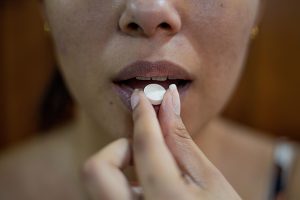
Related to barbiturates, benzodiazepines are a family of depressants used to treat anxiety, insomnia, seizures, and muscle spasms. are a family of depressants used to treat anxiety, insomnia, seizures, and muscle spasms. In low doses, they produce mild sedation and relieve anxiety; in high doses, they induce sleep. In the United States, benzodiazepines are among the most widely prescribed medications that affect the CNS. Brand names include Centrax, Dalmane, Doral, Halcion, Librium, ProSom, Restoril, Xanax, and Valium.
Toxic Inhalants

Toxic Inhalants are also frequently abused as depressants. These drugs are easily accessible as the vapours of glue, gasoline, propane, hairspray, and spray paint, and are inhaled to create a change in consciousness. Related drugs are the nitrites (amyl and butyl nitrite; “poppers,” “rush,” “locker room”) and anesthetics such as nitrous oxide (laughing gas) and ether. Inhalants are some of the most dangerous recreational drugs, with a safety index below 10, and their continued use may lead to permanent brain damage.
Opioids
Opioids: Opium, Morphine, Heroin, and Codeine
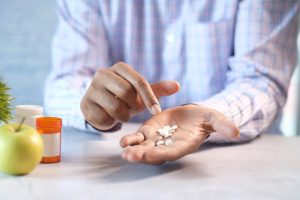
Opioids are a family of chemicals that increase activity in opioid receptor neurons in the brain and in the digestive system, producing euphoria, analgesia, slower breathing, and constipation. are chemicals that increase activity in opioid receptor neurons in the brain and in the digestive system, producing euphoria, analgesia, slower breathing, and constipation. Their chemical makeup is similar to the endorphins, the neurotransmitters that serve as the body’s “natural pain reducers.” Natural opioids are derived from the opium poppy, which is widespread in Eurasia, but they can also be created synthetically.Opium The dried juice of the unripe seed capsule of the opium poppy. is the dried juice of the unripe seed capsule of the opium poppy. It may be the oldest drug on record, known to the Sumerians before 4000 BC. Morphine, a powerful and addictive drug derived from opium and heroin, a powerful and addictive drug derived from opium are stronger, more addictive drugs derived from opium, while codeine, a powerful and addictive drug derived from opium is a weaker analgesic and less addictive member of the opiate family. When morphine was first refined from opium in the early 19th century, it was touted as a cure for opium addiction, but it didn’t take long to discover that it was actually more addicting than raw opium. When heroin was produced a few decades later, it was also initially thought to be a more potent, less addictive painkiller but was soon found to be much more addictive than morphine. Heroin is about twice as addictive as morphine and creates severe tolerance, moderate physical dependence, and severe psychological dependence. The danger of heroin is demonstrated in the fact that it has the lowest safety ratio (6) of all the drugs listed in Table 5.14 Popular Recreation Drugs and Their Safety Ratios.
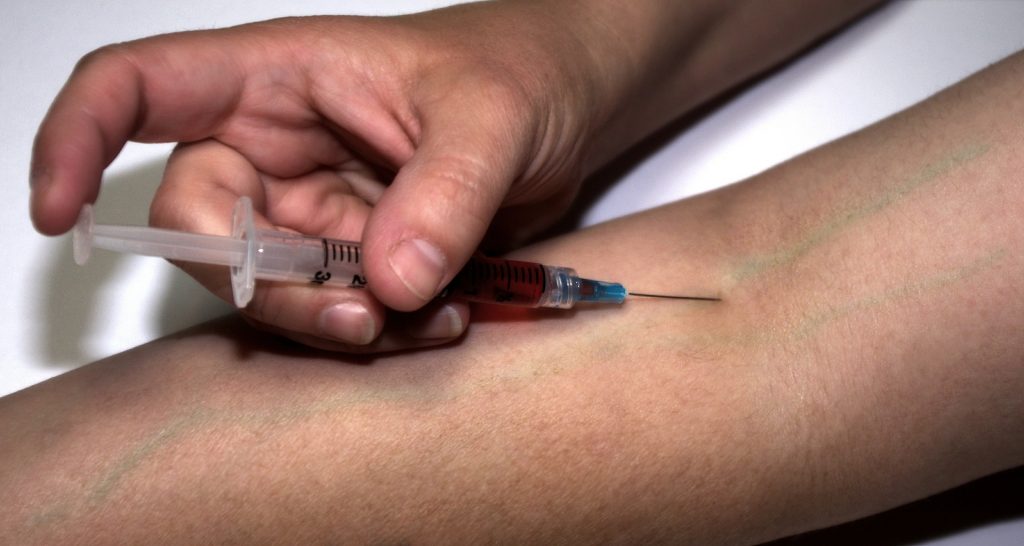
The opioids activate the sympathetic division of the ANS, causing blood pressure and heart rate to increase, often to dangerous levels that can lead to a heart attack or stroke. At the same time, the drugs also influence the parasympathetic division, leading to constipation and other negative side effects. Symptoms of opioid withdrawal include diarrhea, insomnia, restlessness, irritability, and vomiting, all accompanied by a strong craving for the drug. The powerful psychological dependence on opioids and the severe effects of withdrawal make it very difficult for morphine and heroin abusers to quit using. In addition, because many users take these drugs intravenously and share contaminated needles, they run a very high risk of being infected with diseases. Opioid addicts suffer a high rate of infections such as HIV, pericarditis (an infection of the membrane around the heart), and hepatitis B, any of which can be fatal.
Hallucinogens: Cannabis, Mescaline, and LSD
The drugs that produce the most extreme alteration of consciousness are the hallucinogens, a family of psychoactive drugs that alter sensation and perception, and psychoactive drugs that alter sensation and perception and that may create hallucinations. The hallucinogens are frequently known as “psychedelics.” Drugs in this class include lysergic acid diethylamide (LSD, or “Acid”), mescaline, and phencyclidine (PCP), as well as a number of natural plants including cannabis (marijuana), peyote, and psilocybin. The chemical compositions of the hallucinogens are similar to the neurotransmitters serotonin and epinephrine, and they act primarily as agonists by mimicking the action of serotonin at the synapses. The hallucinogens may produce striking changes in perception through one or more of the senses. The precise effects a user experiences are a function not only of the drug itself but also of the user’s preexisting mental state and expectations of the drug experience. In large part, the user tends to get out of the experience that he or she brings to it. The hallucinations that may be experienced when taking these drugs are strikingly different from everyday experience and frequently are more similar to dreams than to everyday consciousness. Cannabis (marijuana) is the most widely used hallucinogen. Marijuana also acts as a stimulant, producing giggling, laughing, and mild intoxication. It acts to enhance the perception of sights, sounds, and smells, and may produce a sensation of time slowing down. It is much less likely to lead to antisocial acts than that other popular intoxicant, alcohol, and it is also the one psychedelic drug whose use has not declined in recent years (National Institute on Drug Abuse, 2009b).

In recent years, cannabis has again been frequently prescribed for the treatment of pain and nausea, particularly in cancer sufferers, as well as for a wide variety of other physical and psychological disorders (Ben Amar, 2006). The recreational and medicinal use of cannabis has been legal in Canada since October 17, 2018. The Cannabis Act(2) outlines the legal framework for controlling production, distribution, sale, and possession (for personal use) across the country, with regulation and sanctions for violations determined by each province and territory. For instance, access to legal cannabis for personal use is restricted to persons over the age of 19 in most provinces and territories, but that has been lowered to 18 in Alberta and Manitoba, to coincide with provincial liquor and tobacco laws(3). Although hallucinogens are powerful drugs that produce striking “mind-altering” effects, they do not produce physiological or psychological tolerance or dependence. While they are not addictive and pose little physical threat to the body, their use is not advisable in any situation in which the user needs to be alert and attentive, exercise focused awareness or good judgment, or demonstrate normal mental functioning, such as driving a car, studying, or operating machinery.
Why We Use Psychoactive Drugs
People have used, and often abused, psychoactive drugs for thousands of years. Perhaps this should not be surprising, because many people find using drugs to be fun and enjoyable. Even when we know the potential costs of using drugs, we may engage in them anyway because the pleasures of using the drugs are occurring right now, whereas the potential costs are abstract and occur in the future.
Risk-Taking Behaviour in Adolescents
Because drug and alcohol abuse is a behaviour that has such important negative consequences for so many people, researchers have tried to understand what leads people to use drugs. Drug use is in part the result of socialization. Children try drugs when their friends convince them to do it, and these decisions are based on social norms about the risks and benefits of various drugs. Adolescents that try cigarette smoking have a higher desire to take risks. Risk-taking behaviour in adolescents who reported having tried a cigarette at least once against those who reported that they had never tried smoking had a higher desire to try other substances.
For more information about Drug Use Among Ontario Students
Key Takeaways
- Psychoactive drugs are chemicals that change our state of consciousness. They work by influencing neurotransmitters in the CNS.
- Using psychoactive drugs may create tolerance and, when they are no longer used, withdrawal. Addiction may result from tolerance and the difficulty of withdrawal.
- Stimulants, including caffeine, nicotine, and amphetamine, increase neural activity by blocking the re-uptake of dopamine, norepinephrine, and serotonin in the CNS.
- Depressants, including, alcohol, barbiturates, and benzodiazepines, decrease consciousness by increasing the production of the neurotransmitter GABA and decreasing the production of the neurotransmitter acetylcholine.
- Opioids, including codeine, opium, morphine, and heroin, produce euphoria and analgesia by increasing activity in opioid receptor neurons.
- Hallucinogens, including cannabis, mescaline, and LSD, create an extreme alteration of consciousness as well as the possibility of hallucinations.
- Recreational drug use is influenced by social norms as well as by individual differences. People who are more likely to take risks are also more likely to use drugs.
Attribution:
Drugs, Health & Behavior by Jacqueline Schwab and Denise Salters is licensed under a Creative Commons Attribution-NonCommercial-ShareAlike 4.0 International License, with Canadian Content
References
Home | DEA.gov. (n.d.). https://www.dea.gov/ (https://www.dea.gov/sites/default/files/drug_of_abuse.pdf)
- https://www.canada.ca/en/health-canada/services/food-nutrition/food-safety/food-additives/caffeine-foods.html
- Legislative Services Branch. (20231, April 27). Consolidated federal laws of Canada, Cannabis Act. https://laws.justice.gc.ca/eng/acts/C-24.5/page-1.html
- Government of Canada, Department of Justice, Electronic Communications. (2021, July 7). Cannabis Legalization and Regulation. https://www.justice.gc.ca/eng/cj-jp/cannabis/

